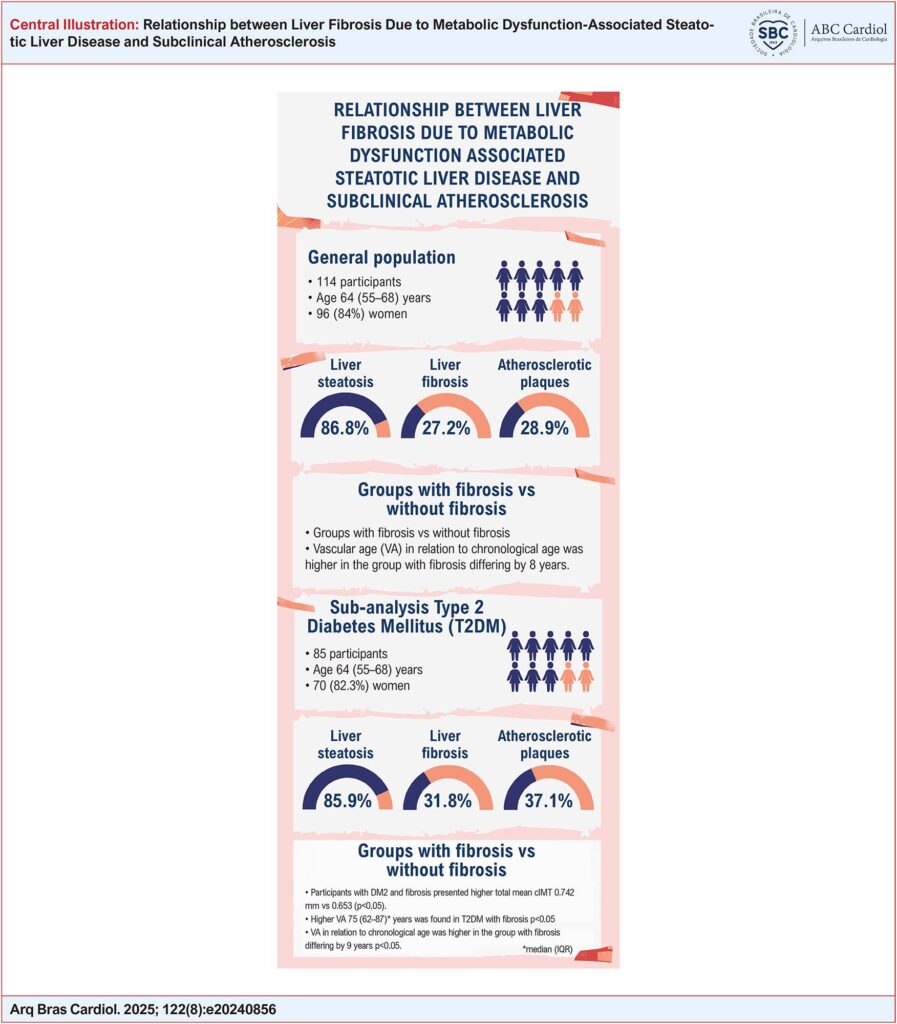Arq. Bras. Cardiol. 2025; 122(8): e20240856
Relationship between Liver Fibrosis Due to Metabolic Dysfunction-Associated Steatotic Liver Disease and Subclinical Atherosclerosis
This Original Article is referred by the Short Editorial "Unveiling the Link between MASLD-Associated Liver Fibrosis and Subclinical Atherosclerosis".
Abstract
Background
Metabolic dysfunction-associated steatotic liver disease (MASLD) is the most prevalent liver disease worldwide. MASLD can progress to fibrosis and related complications, with cardiovascular disease being the leading cause of death in affected individuals. Carotid atherosclerosis markers can predict cardiovascular outcomes, underscoring the relevance of their association with liver fibrosis.
Objective
To evaluate the relationship between liver fibrosis in MASLD and subclinical atherosclerosis by assessing carotid intima-media thickness (cIMT), vascular age (VA), and the presence of atherosclerotic plaques.
Methods
This prospective study included participants at risk for MASLD. Liver steatosis and fibrosis were assessed via ultrasound and liver elastography using controlled attenuation parameter measurements. Carotid atherosclerosis was evaluated through carotid ultrasound, cIMT measurements, and VA. A significance level of 5% (p < 0.05) was adopted.
Results
A total of 114 participants were included, with a median age of 64 years (IQR: 55–68), and 96 (84%) were women. Steatosis was identified in 99 participants (86.8%) and fibrosis in 31 (27.2%). Atherosclerotic plaques were present in 33 participants (28.9%), with no significant difference in frequency between groups. However, the fibrosis group showed higher cIMT and elevated VA. In a subgroup analysis of 85 participants with type 2 diabetes mellitus (T2DM), 27 (31.8%) had fibrosis. These individuals had a higher cIMT (0.742 mm vs. 0.653 mm; p < 0.05), and VA exceeded chronological age by 9 years in the fibrosis group compared to those without fibrosis (p < 0.05).
Conclusion
This study demonstrates that individuals with MASLD and liver fibrosis exhibit greater vascular aging and increased cardiovascular risk, as reflected by elevated cIMT and VA.
167

